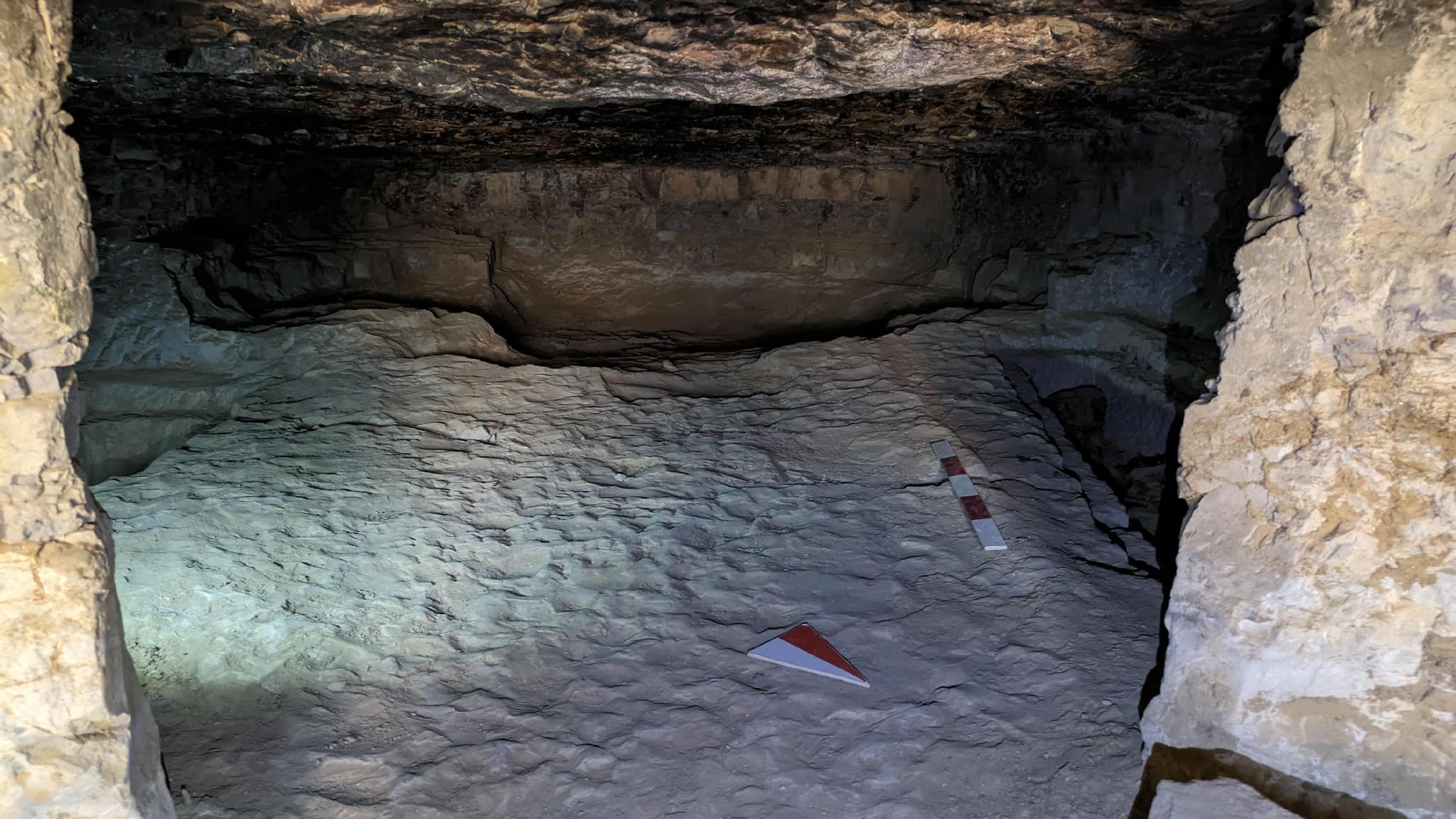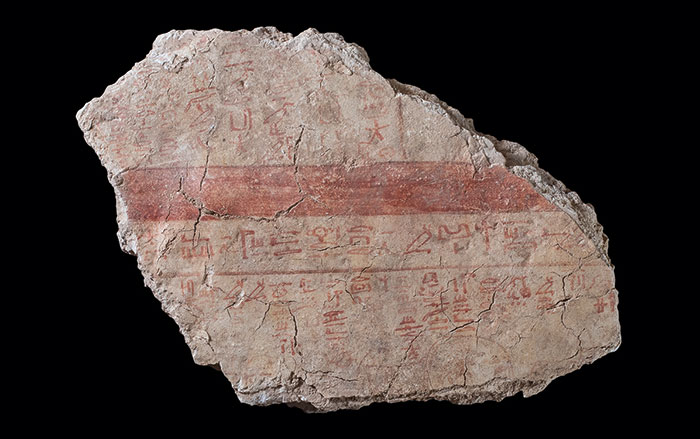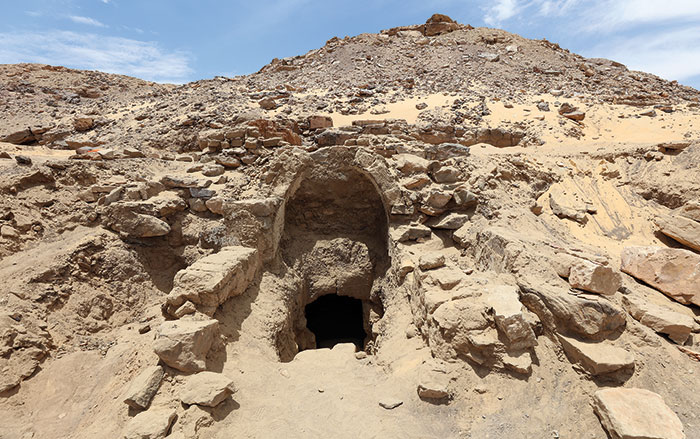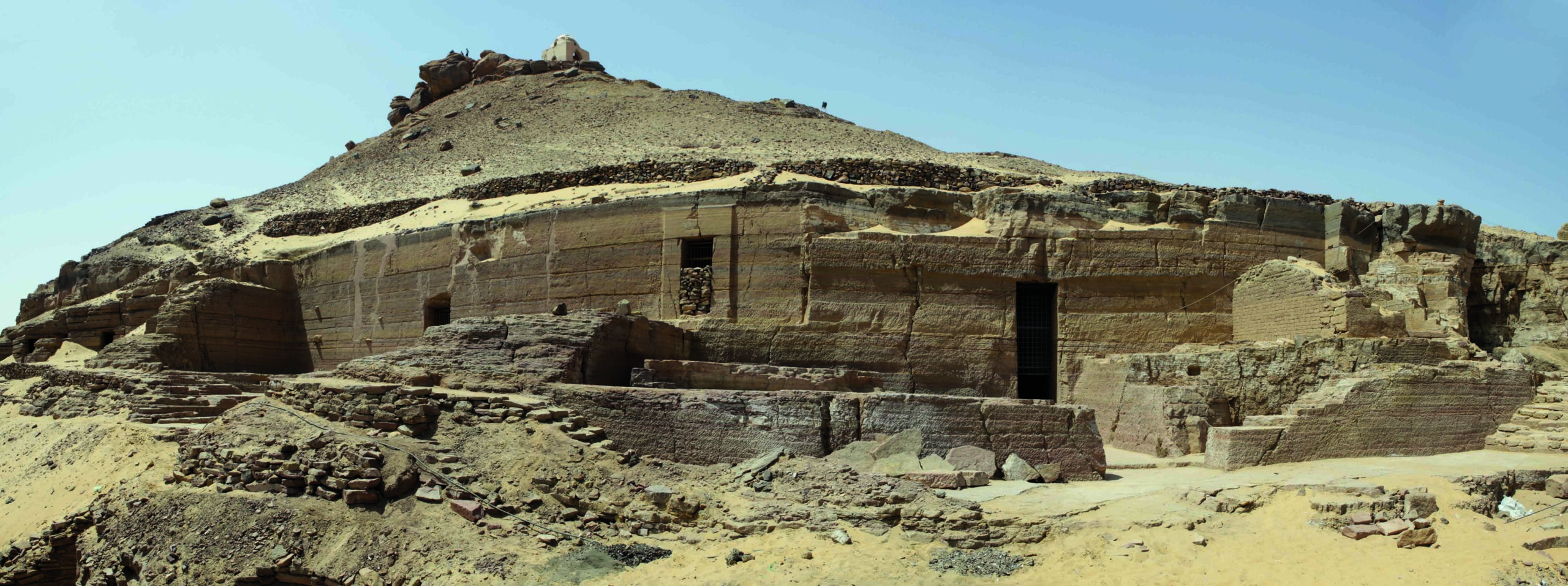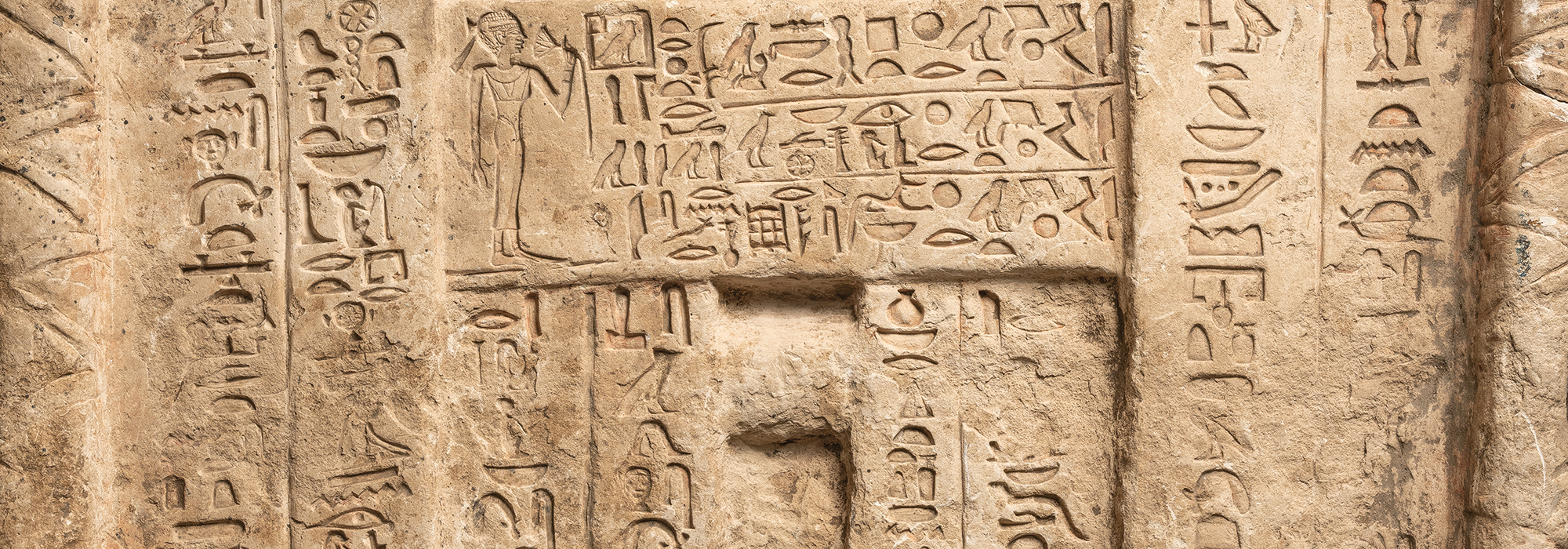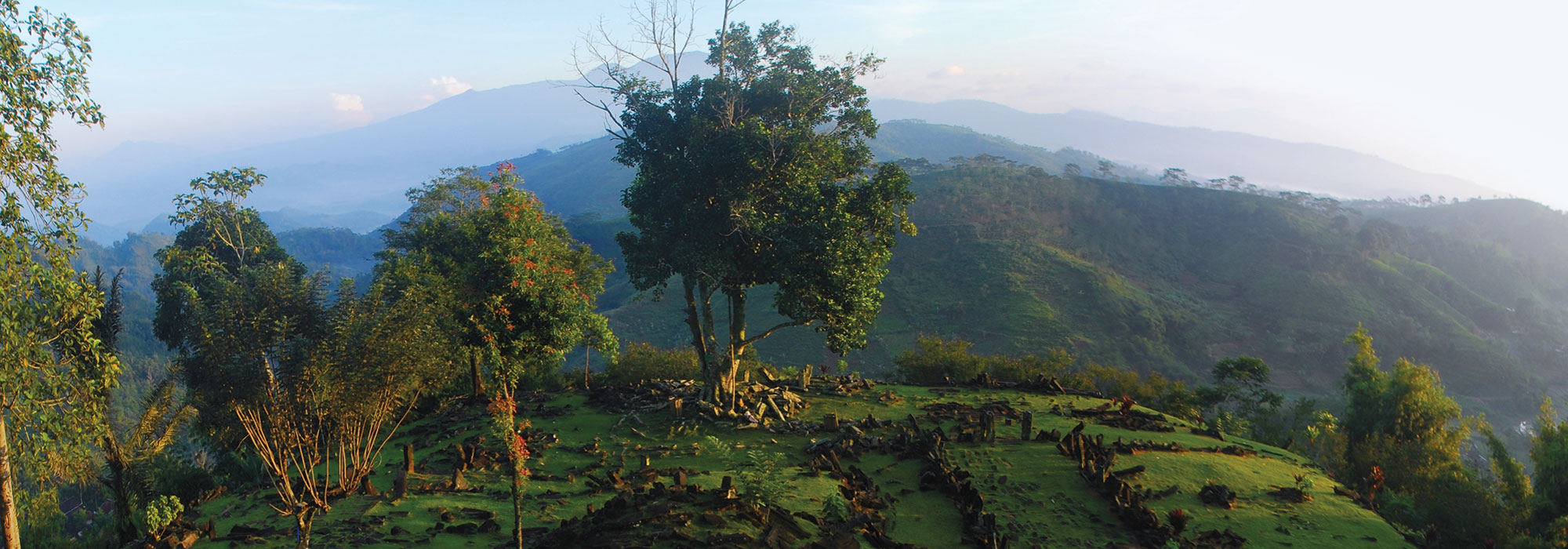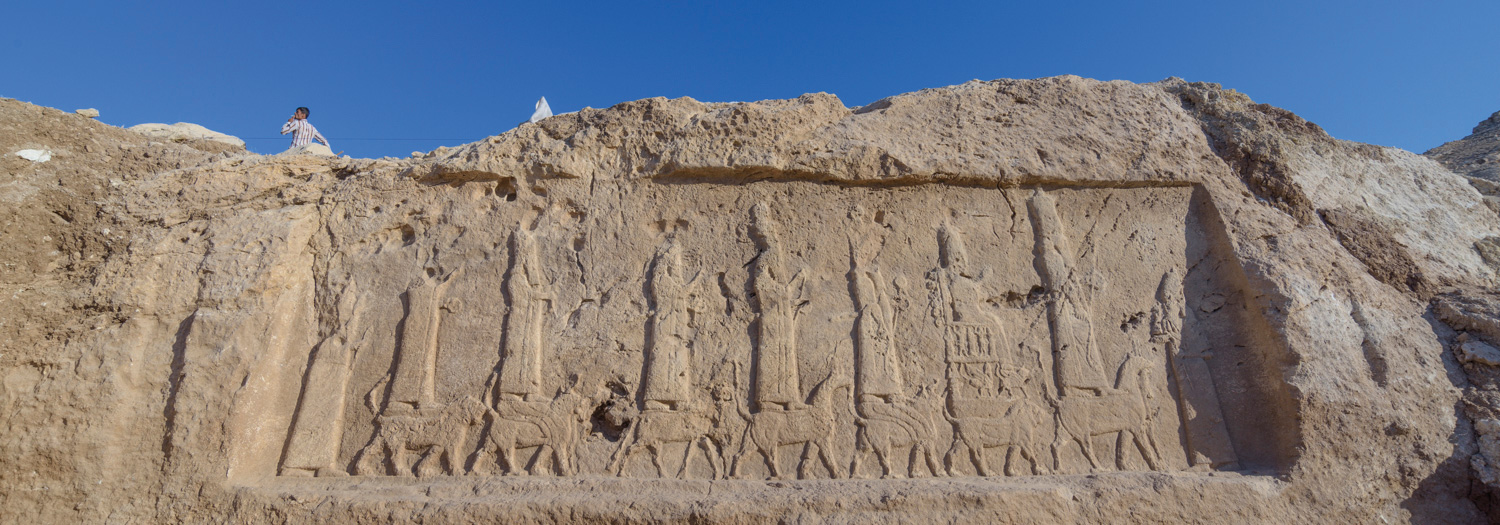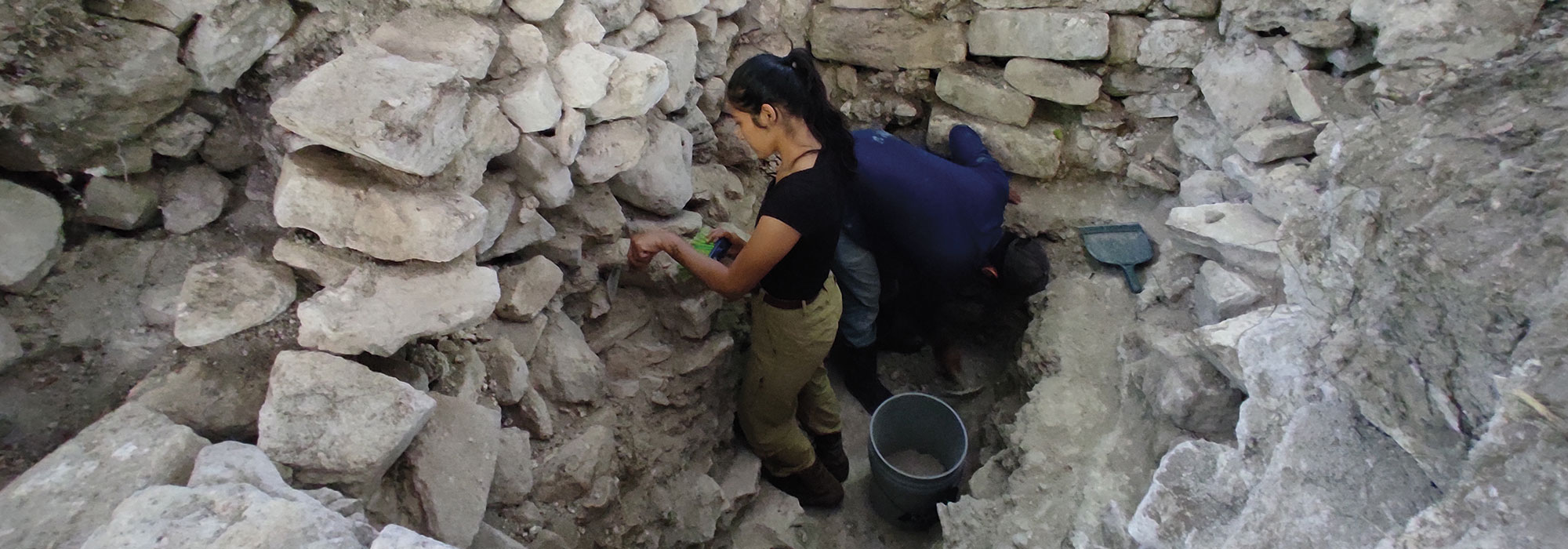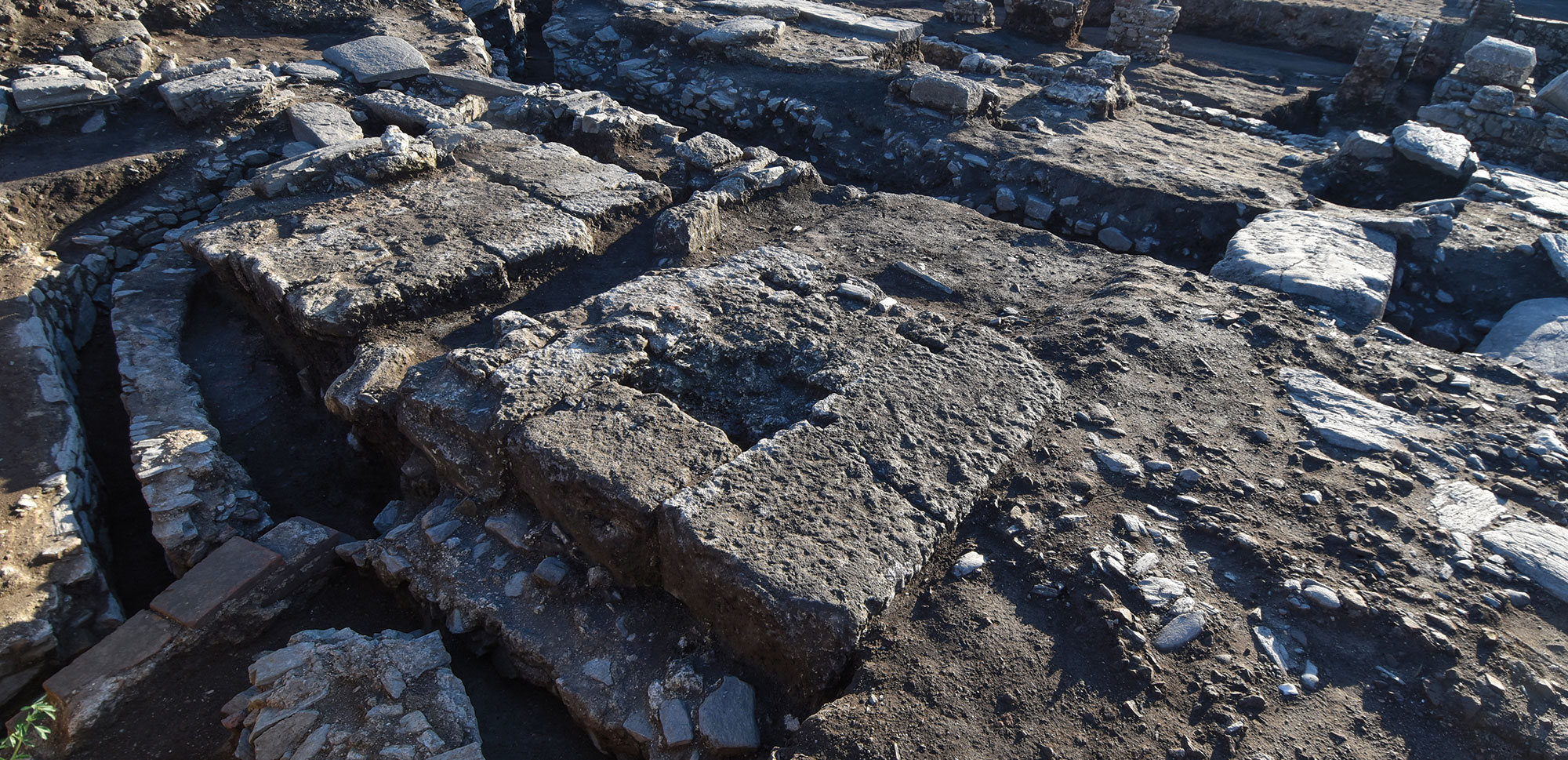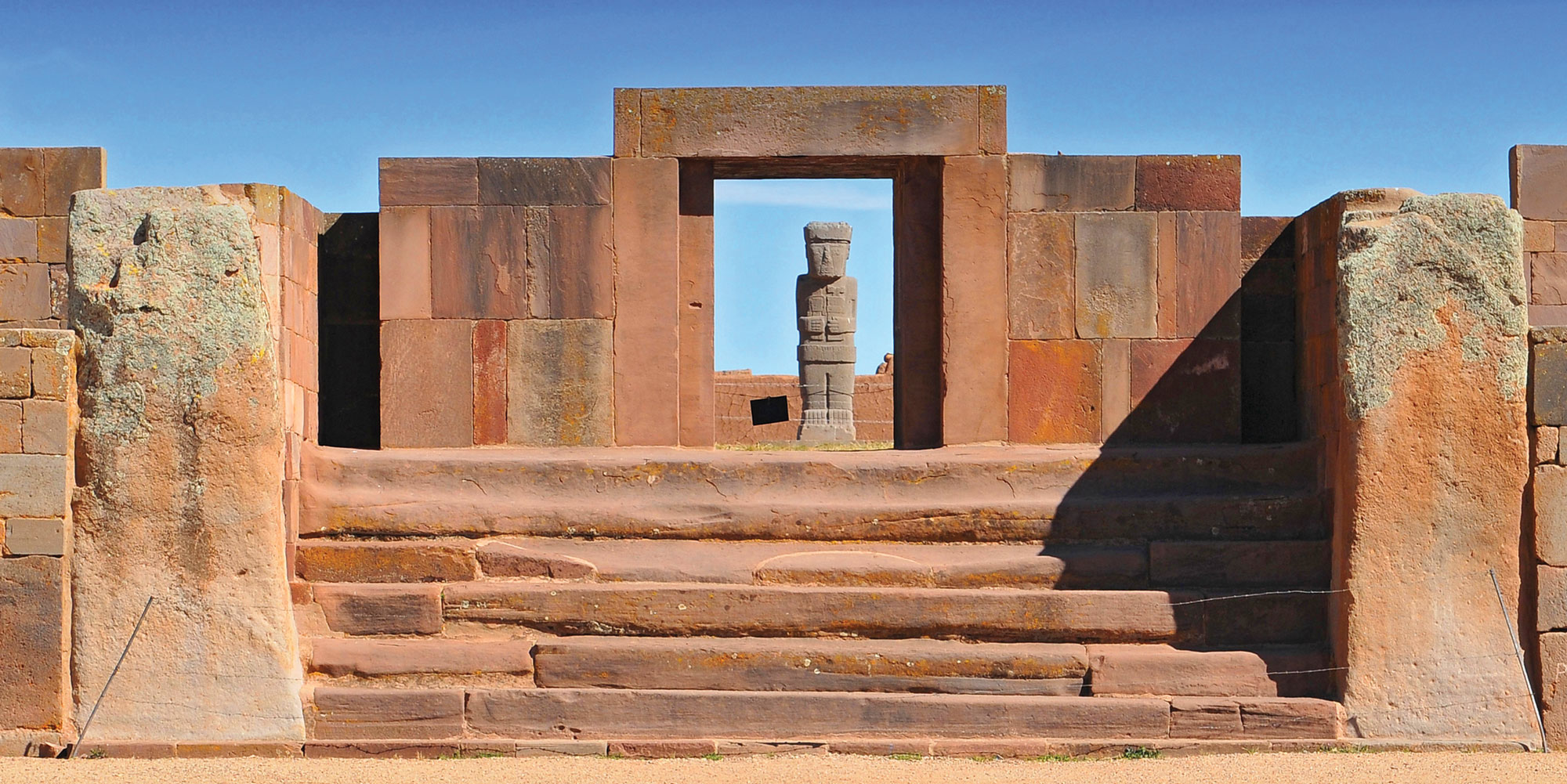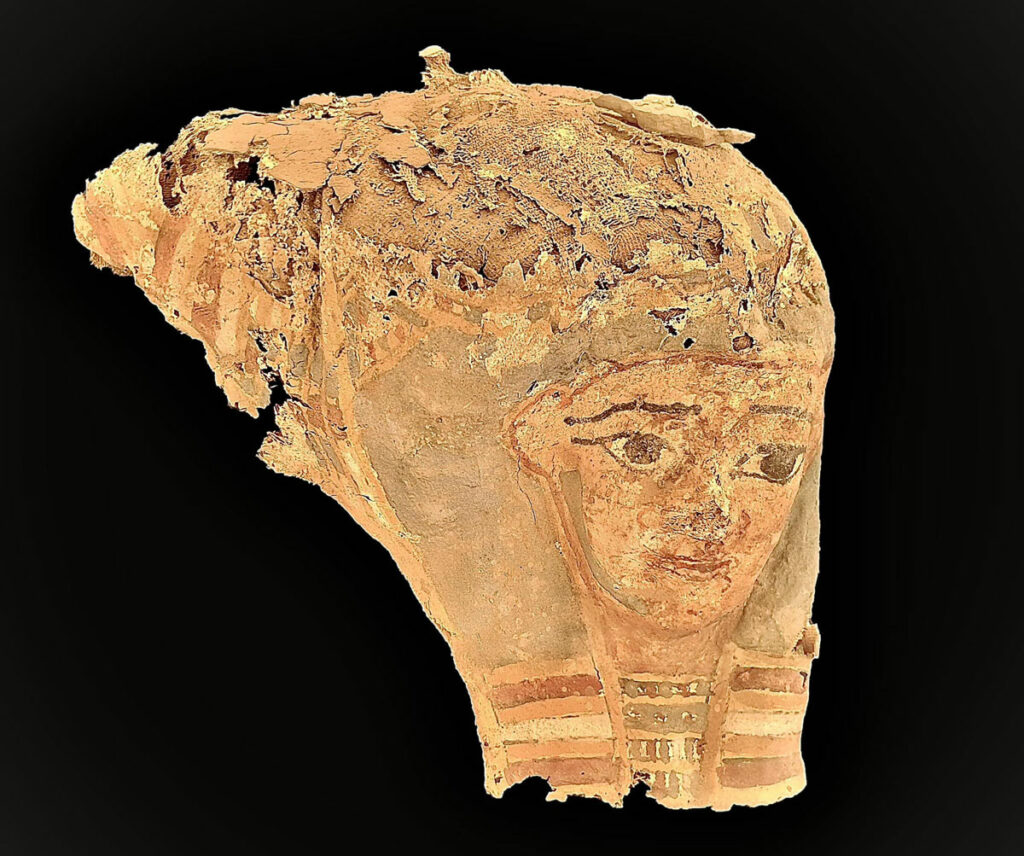
ASWAN, EGYPT—According to an Ahram Online report, 33 tombs dated to the Greco-Roman era were discovered by a team of Egyptian and Italian archaeologists in a cemetery on the west bank of the city of Aswan. The cemetery was in use from the sixth century B.C. to the third century A.D. Some of the newly discovered tombs have vaulted entrances and courtyards surrounded by mudbrick walls, and others were carved into the rock of a mountain. Mohamed Ismail Khaled of the Supreme Council of Antiquities said that parts of mummies, fragments of funerary tools, stone and wood coffins, painted terracotta figurines, offering tables, and pieces of painted cartonnage were recovered. CT scans of the mummies detected the presence of bracelets on some of the individuals. One tomb contained a stone coffin holding the remains of a possible adult woman and a child estimated to have been between the ages of one and two at the time of death. Additional study is needed to determine if the two were related. Patrizia Piacentini of the University of Milan added that examination of the human remains indicates that as many as 40 percent of the people buried in these tombs were children or adolescents. Evidence for the presence of infectious diseases, metabolic disorders, an amputation, anemia, nutritional deficiencies, tuberculosis, and osteoarthritis was also detected among the remains, she concluded. To read about a painting of a leopard uncovered at the Aswan necropolis, go to "Guardian Feline."


